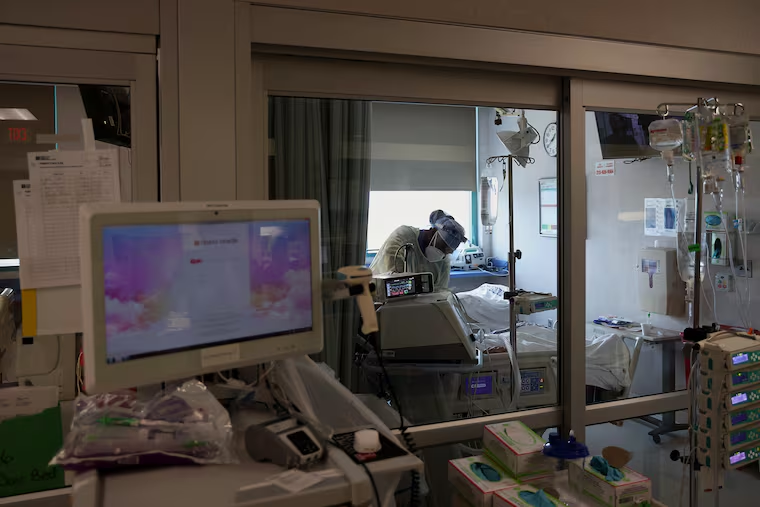COVID-19 race and ethnicity data reporting still a challenge in many states, including Pa., N.J.
Critical race and ethnicity data for COVID-19 cases is still under-reported in many states, including Pennsylvania and New Jersey.

Months into the coronavirus pandemic, many states — including Pennsylvania and New Jersey — are still struggling to report comprehensive race and ethnicity data for COVID-19 cases.
Information about the race and ethnicity of COVID-19 patients is critical because the data that are available have shown that the pandemic is hitting communities of color especially hard.
Research so far has found that Black and Hispanic people are at greater risk of exposure to the virus because they are more likely to hold essential worker jobs or be unable to socially distance from others; and higher rates of underlying health conditions make them more vulnerable to becoming severely ill if they contract the virus.
In Philadelphia, 60% of people hospitalized for COVID-19 identified as Black, according to data released by the city in July.
Yet a study by researchers at Yale University and the University of Pittsburgh found that at the end of April, nearly half of states weren’t reporting any race and ethnicity data at all. And in states that did report this information, the picture was far from complete.
» READ MORE: Breaking down the toll of Philly’s coronavirus hospitalizations by race, age, and neighborhood
“The big ask for the public health officials is they use these data to improve their processes around collection of race and ethnicity data, and continue to pay attention to the disproportionate effect,” said Utibe Essien, an assistant professor of medicine at the University of Pittsburgh, and a co-author of the study, which was published this month in the Journal of General Internal Medicine.
In April, Pennsylvania was reporting race and ethnicity for less than 40% of its cases, and no race and ethnicity data were available for New Jersey, according to the report.
Since then, both states have made progress:
New Jersey Gov. Phil Murphy in April signed a bipartisan bill ordering hospitals to report race and ethnicity data. The state’s COVID-19 dashboard currently reports race and ethnicity for 64% of the deaths in the state.
Pennsylvania currently reports race for 50% of COVID-19 cases and ethnicity for 32% of cases, according to Pennsylvania Department of Health.
Pennsylvania issued an alert to doctors and laboratories in mid-April, reminding them of their responsibility to collect race and ethnicity data, after becoming aware of the major gaps, said Nate Wardle, a spokesperson for the health department. At one point, he said, race data were missing for about 80% of COVID-19 cases in Pennsylvania.
Hospitals and health centers that receive federal funding are required under the Affordable Care Act to collect race and ethnicity data, but in practice, gathering this information can be challenging, Essien said.
Some patients may not want to disclose their race or ethnicity for fear of discrimination. At the height of the pandemic, medical staff may have been too busy or in too much of a hurry to treat emergencies to adequately gather complete patient information, he said.
Still, better understanding the demographics of COVID-19 patients is crucial for public health agencies to improve outreach and treatment efforts, and curtail new cases.
For instance, Chester County officials added more test sites in May and translated safety education materials to different languages in West Grove, Kennett Square and Oxford after finding a spike in cases there.
Beyond the coronavirus pandemic, more comprehensive data can help public health agencies and researchers better understand why the virus has been so devastating in particular communities, and help improve health care access, “to prevent the same disproportionate toll in the future,” Essien said.
“It’s not just a numbers game,” he said.